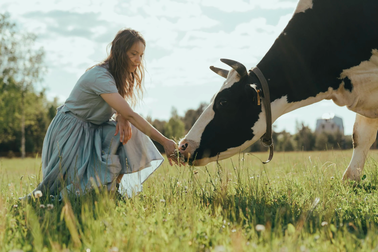 In the vast realm of agriculture, launching and operating a mini-farm has the potential for rich rewards. Let's share these essential tips to help you navigate this profitable yet challenging endeavor, whether you're a long-time gardener or stepping into the farming world for the first time. ( Image via Pexels ) Scoping Out Consumer Needs The first step in running a successful farm involves identifying what your local market craves. Do your research to understand what people in your area are willing to purchase. Knowing what your customer base desires ensures a steady flow of income and reduces the chances of unsold inventory. This key understanding sets the stage for everything else you do on your farm.
Determining a Budget Next, lay down a detailed financial roadmap that includes every possible expense, from procuring seeds to equipment maintenance. This will also account for labor costs, utility bills, and other operational charges. A robust budget keeps spending in control and aids in planning for future scaling or diversification of the farm. Conducting a Property Assessment Before taking ownership of any piece of land, make sure to get it professionally surveyed. This will help in delineating property lines clearly, thus avoiding future legal disputes. Additionally, a professional survey can uncover potential risks or limitations, such as soil quality or water availability, enabling you to take preventive measures. Improving Your Management Skills Going back to school for a business degree can be a strategic decision to enhance your farm management skills. By pursuing business degrees in fields such as accounting, business, communications, or management, you can acquire a wide range of skills that will help you efficiently handle the various aspects of running a farm. These programs offer insights into better financial management, effective communication strategies, and overall business operations, which are crucial for a thriving agricultural business. Additionally, the flexibility of online degree programs means you can continue managing your farm operations without having to compromise your educational goals, allowing for a balance between personal advancement and professional responsibilities. Tapping Into Public Funding Subsequently, look into the range of government grants and tax credits that are specially designed to assist small-scale farmers. These financial incentives can significantly ease the burden of initial investments and ongoing operational costs. They also make investing in sustainable and innovative farming techniques easier, which can prove advantageous in the long run. Leverage Free Resources Utilizing online resources can significantly enhance your farming practices, offering a wealth of information right at your fingertips. For instance, if you're grappling with common pests such as Japanese beetles, the internet is a treasure trove of strategies and solutions. Websites dedicated to agriculture, farming forums, and even social media groups can provide insights into effective, sustainable methods for managing these pests. From expert articles detailing natural predator use to instructional videos on DIY pest control solutions, online platforms can equip you with the knowledge and techniques needed to protect your crops efficiently. This digital guidance not only helps in addressing specific challenges like pest management but also supports the overall improvement and sustainability of your farm operations. Building Vendor Partnerships The success of your farm also relies on your ability to distribute what you produce. Aramark recommends forging beneficial relationships with local vendors, markets, and even restaurants. Not only can this provide you with a steady outlet for your goods, but it can also result in promotional opportunities and even collaborations that boost your farm's overall visibility. Adopting a Smart Pricing Model Last but not least, your pricing strategy will play a crucial role in determining your farm's profitability. Take into account various factors such as production cost, local demand, and competition. Craft a pricing model that covers your expenses and allows for sustainable growth and profitability. Embarking on the journey of running a profitable mini-farm is no small feat; it requires a mix of careful planning, resource management, and grit. The roadmap laid out in this manual is designed to offer a structured approach to achieving long-term success. Keep in mind that, much like the crops you'll grow, success takes time to cultivate. However, with patience, adaptability, and a focus on sustainability and profitability, you can turn your agricultural dreams into a rewarding reality. "Adam Taylor ventured into freelancing from a corporate job, aiming for work-life balance. He learned to negotiate better pay and benefits, streamline his workflow, and maintain clear boundaries between work and home. Now, through taylorandnoel.com, he shares his insights to empower fellow freelancers."
0 Comments
Leave a Reply. |
Categories |

 RSS Feed
RSS Feed